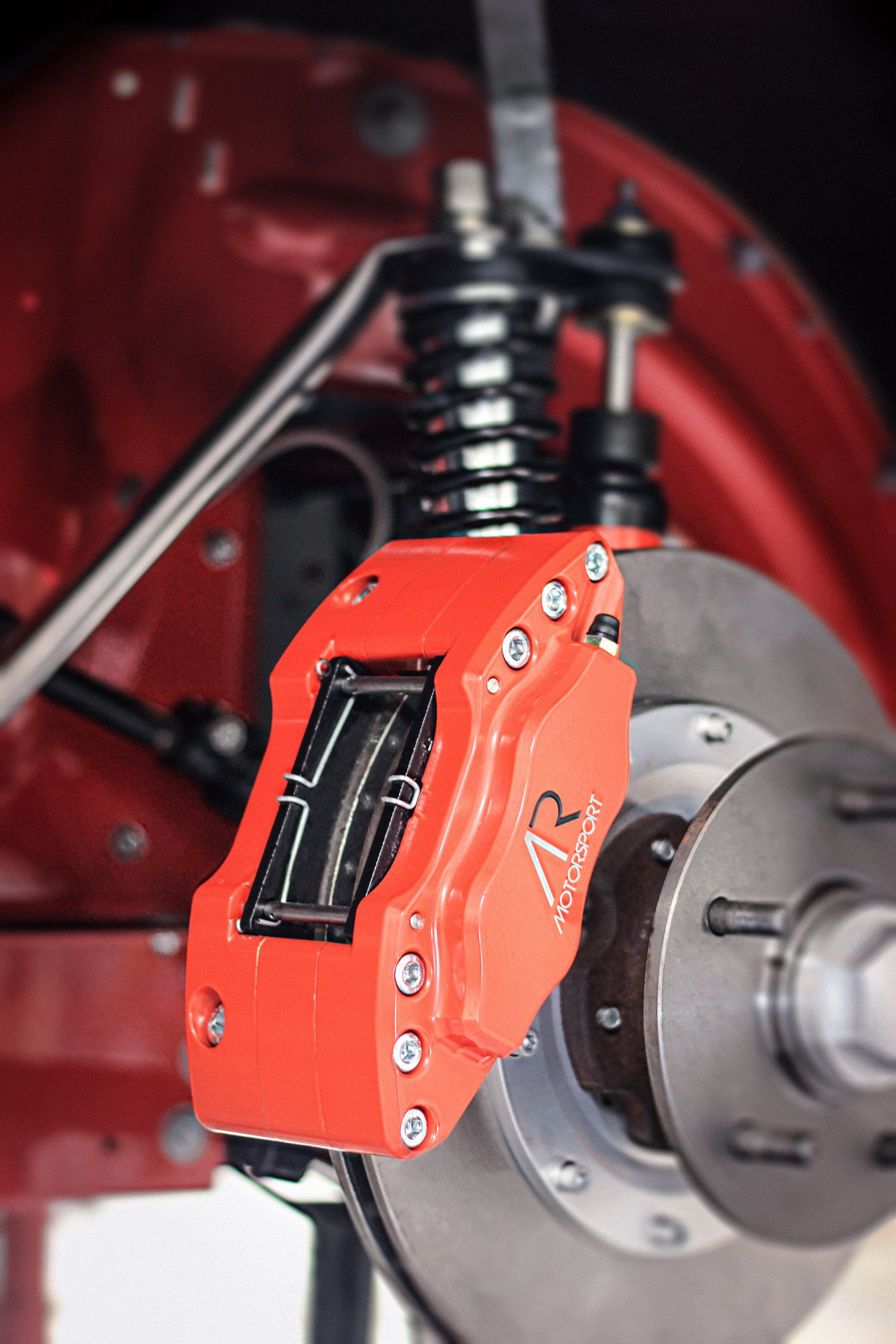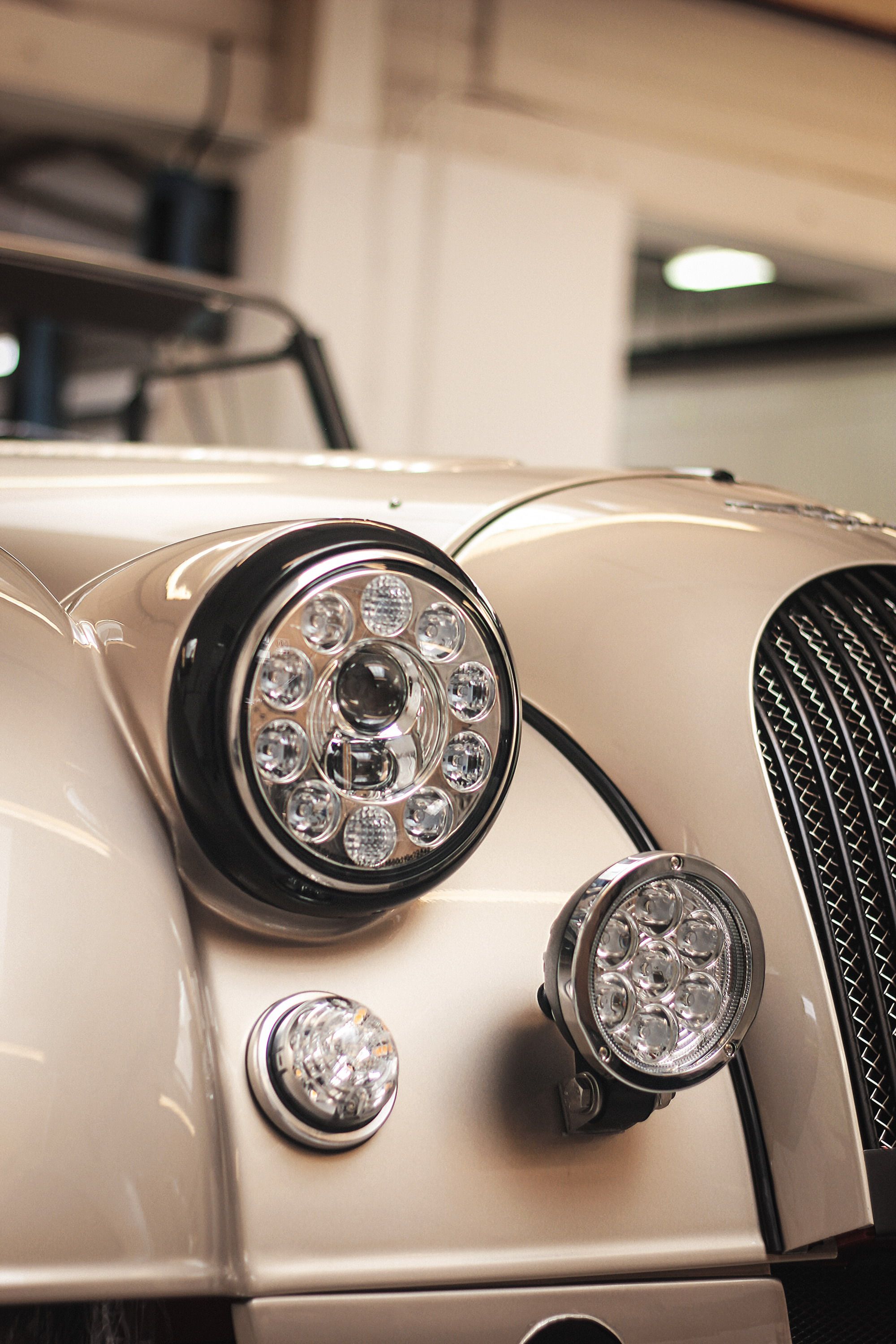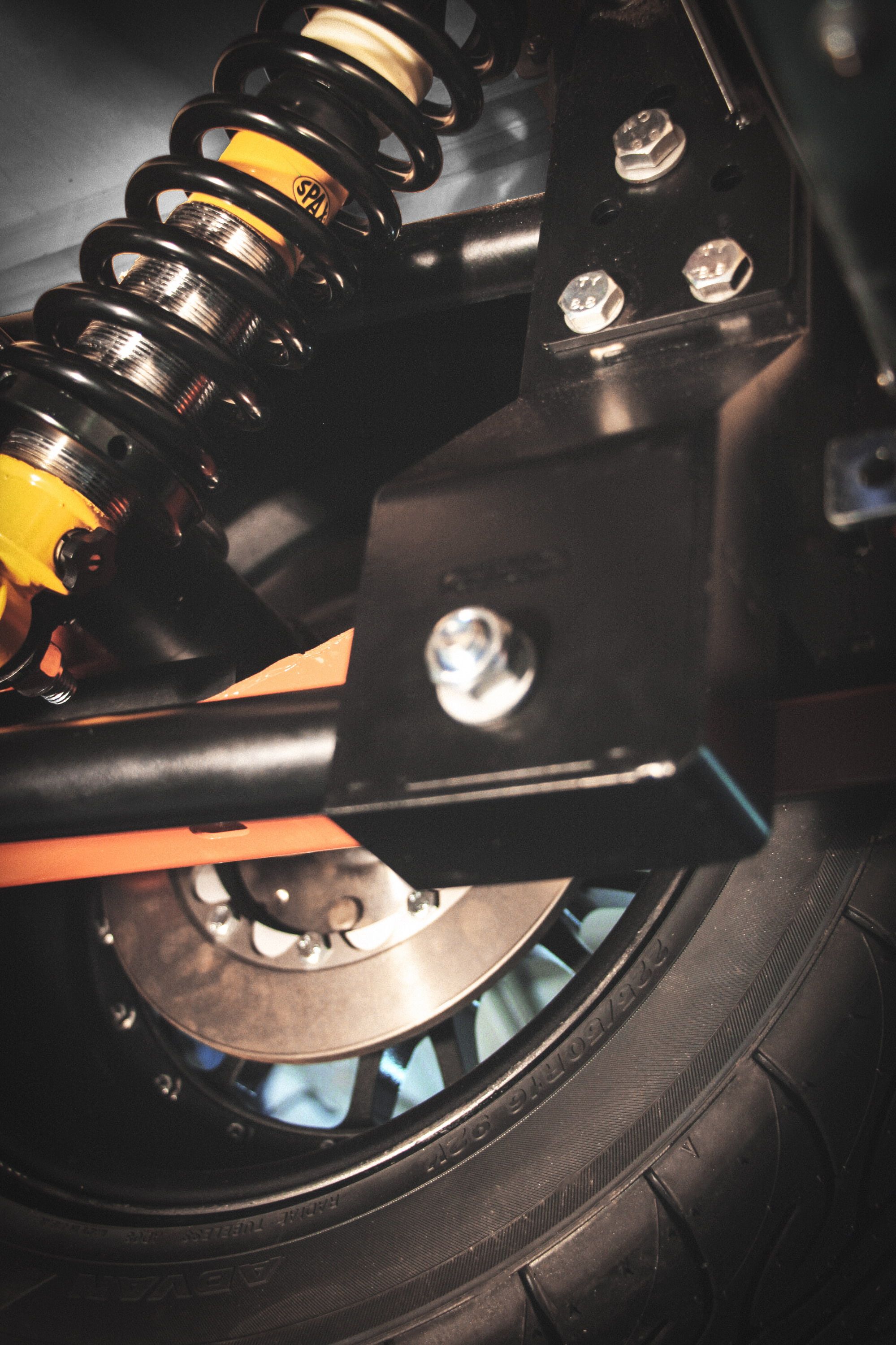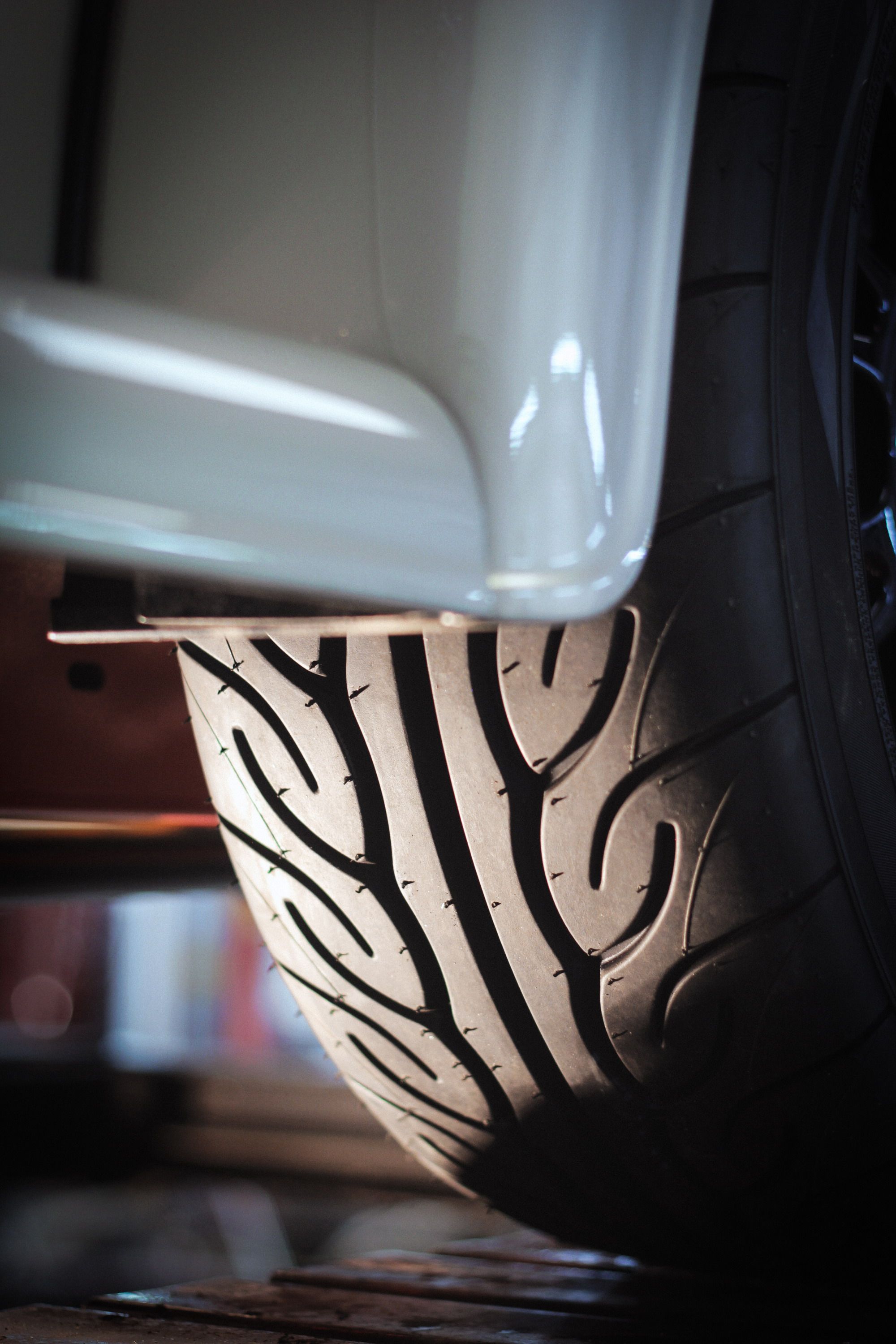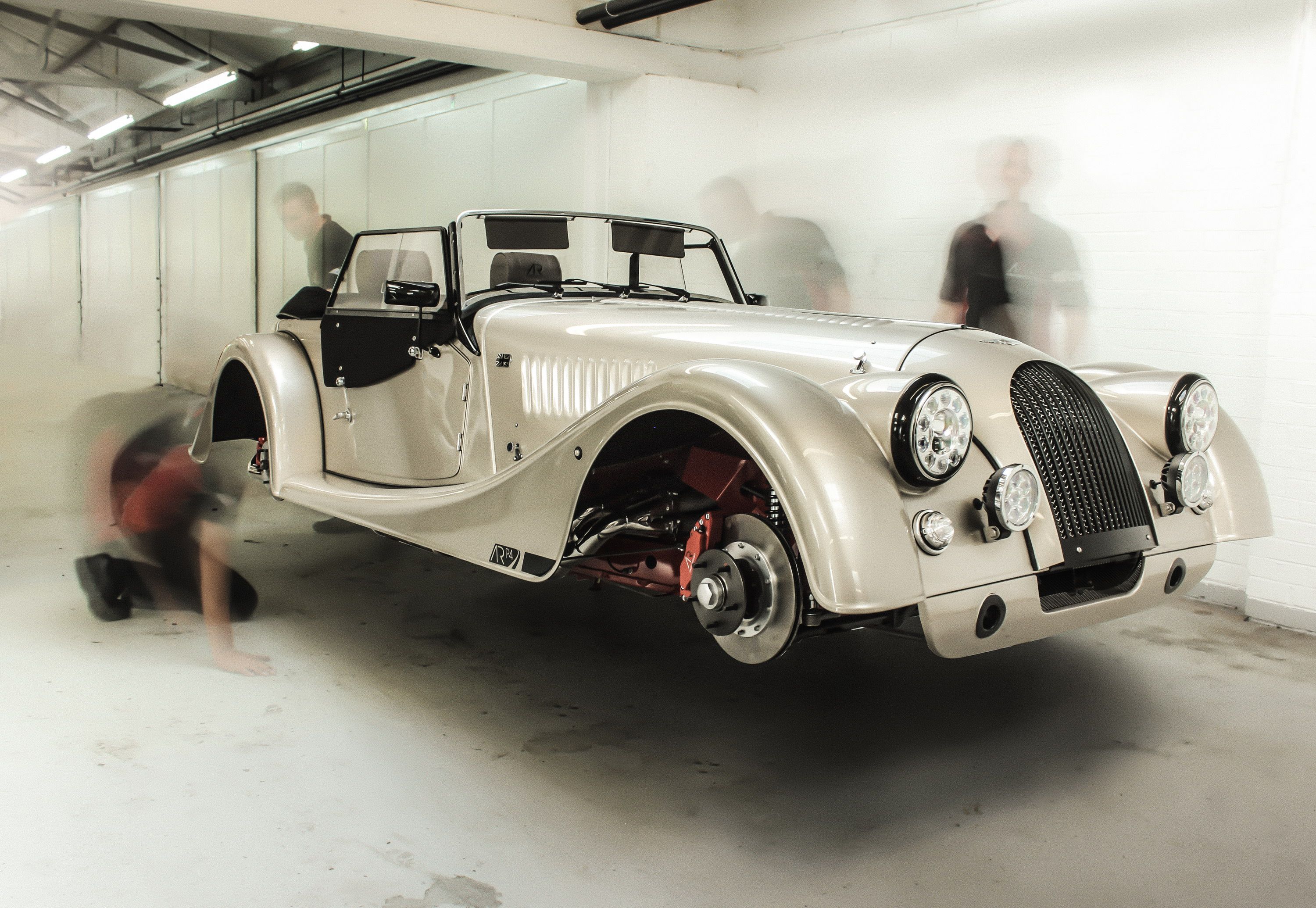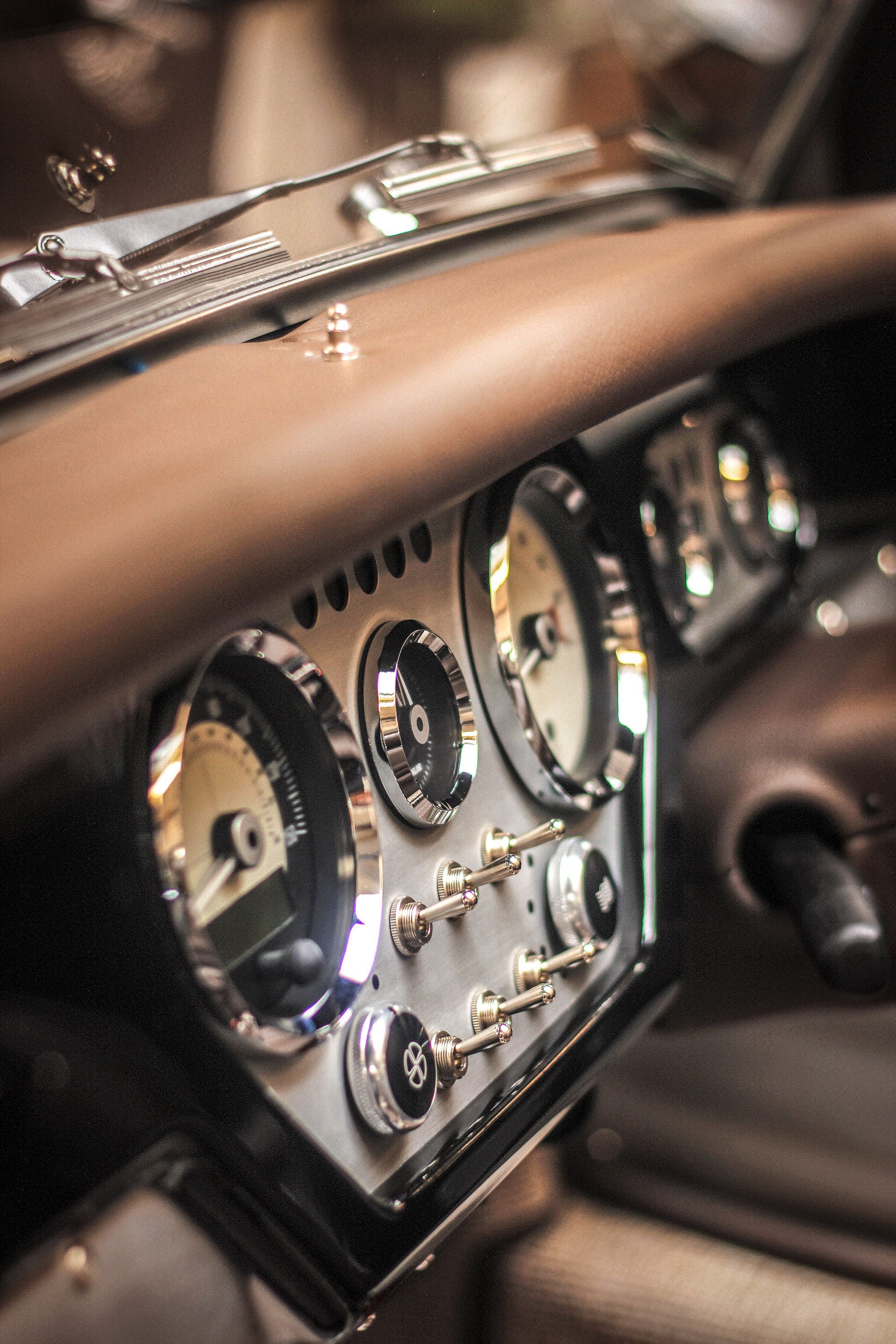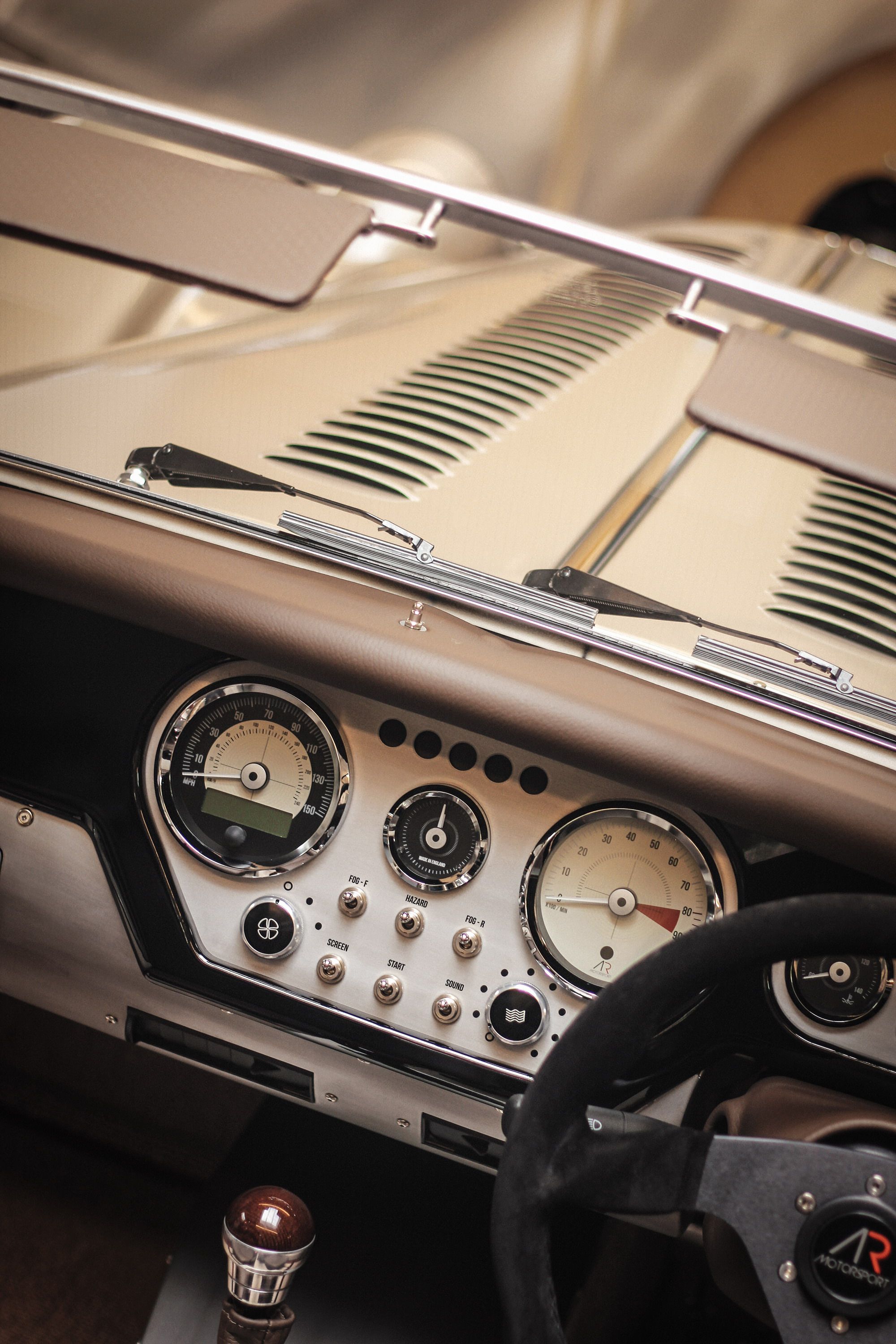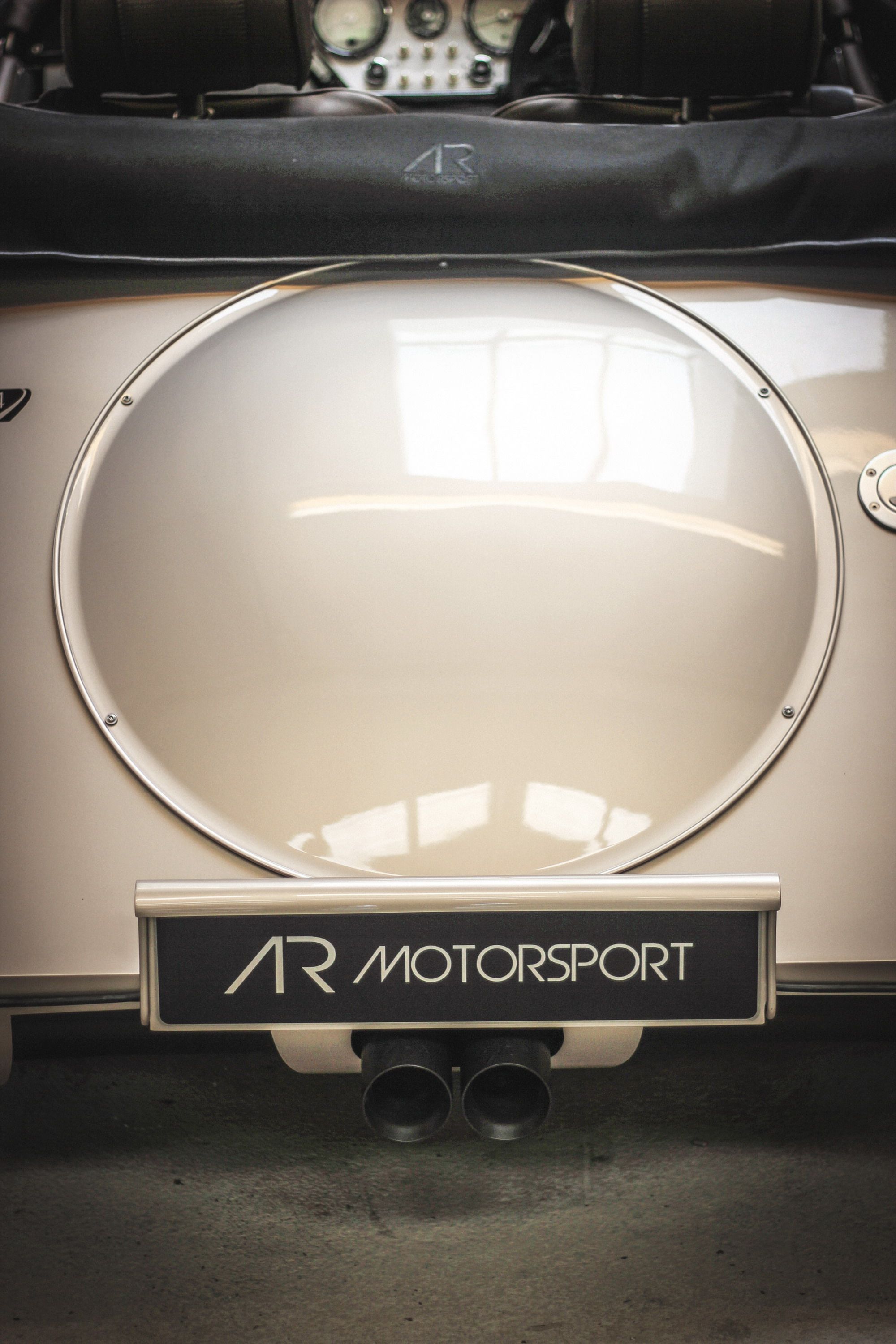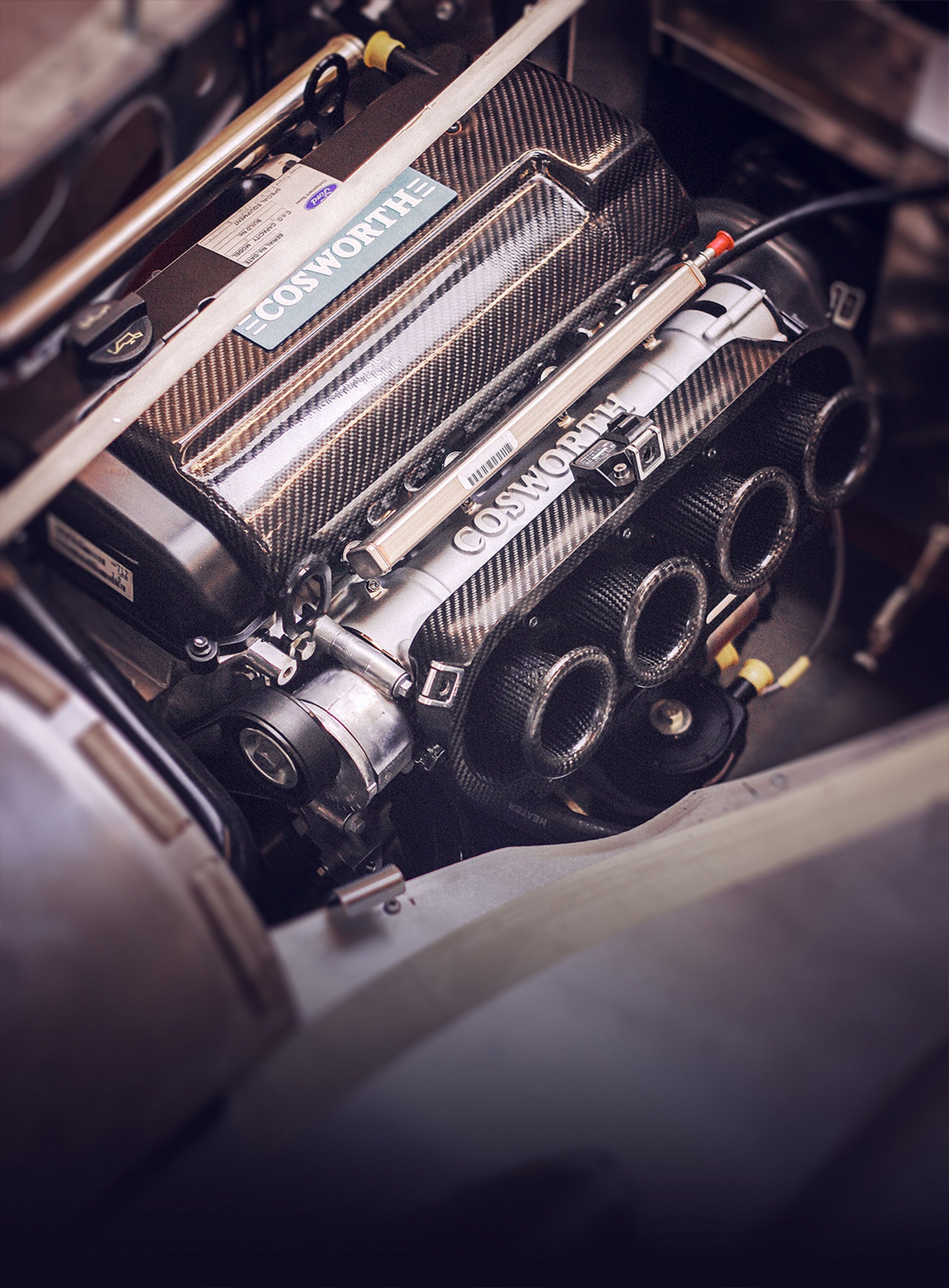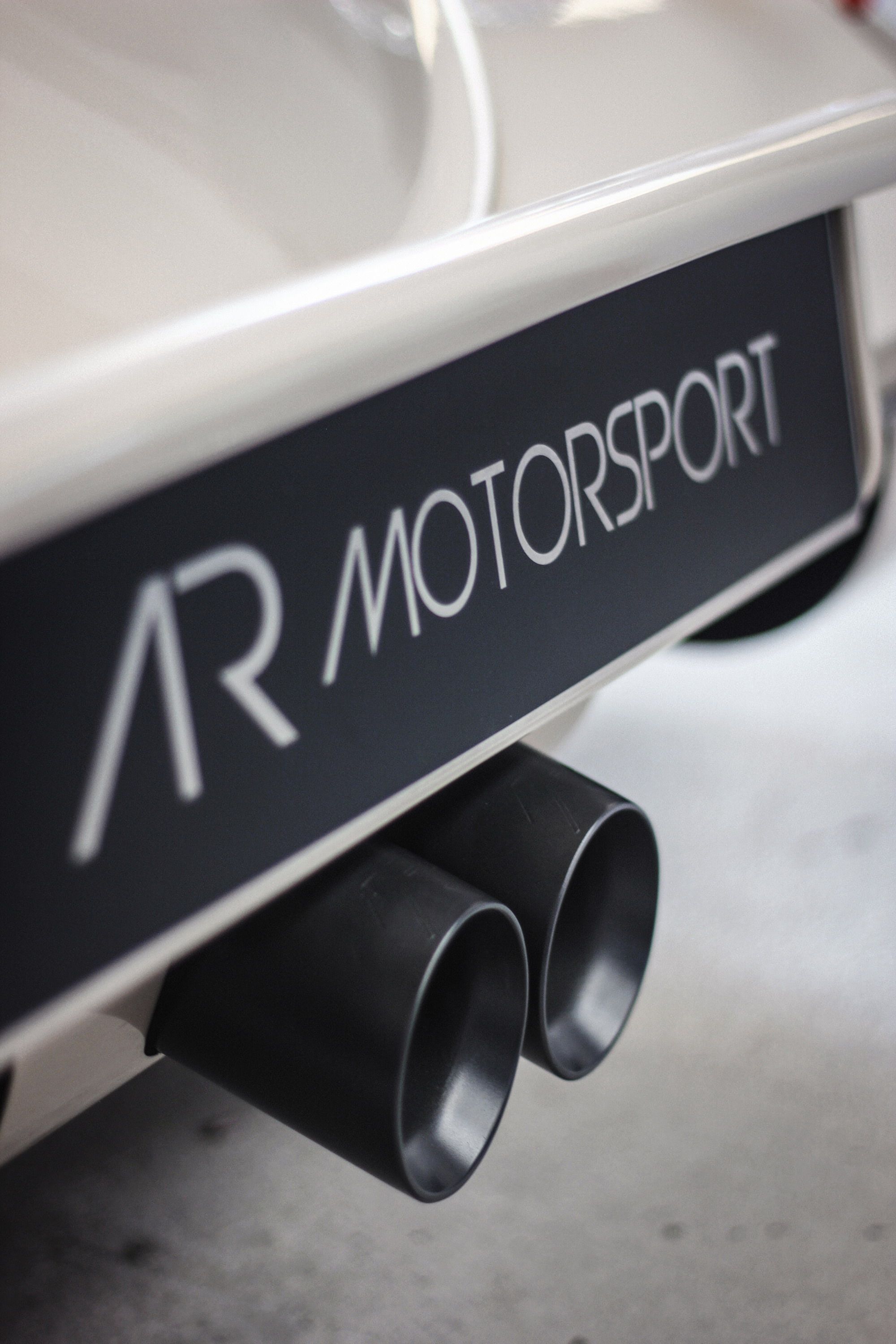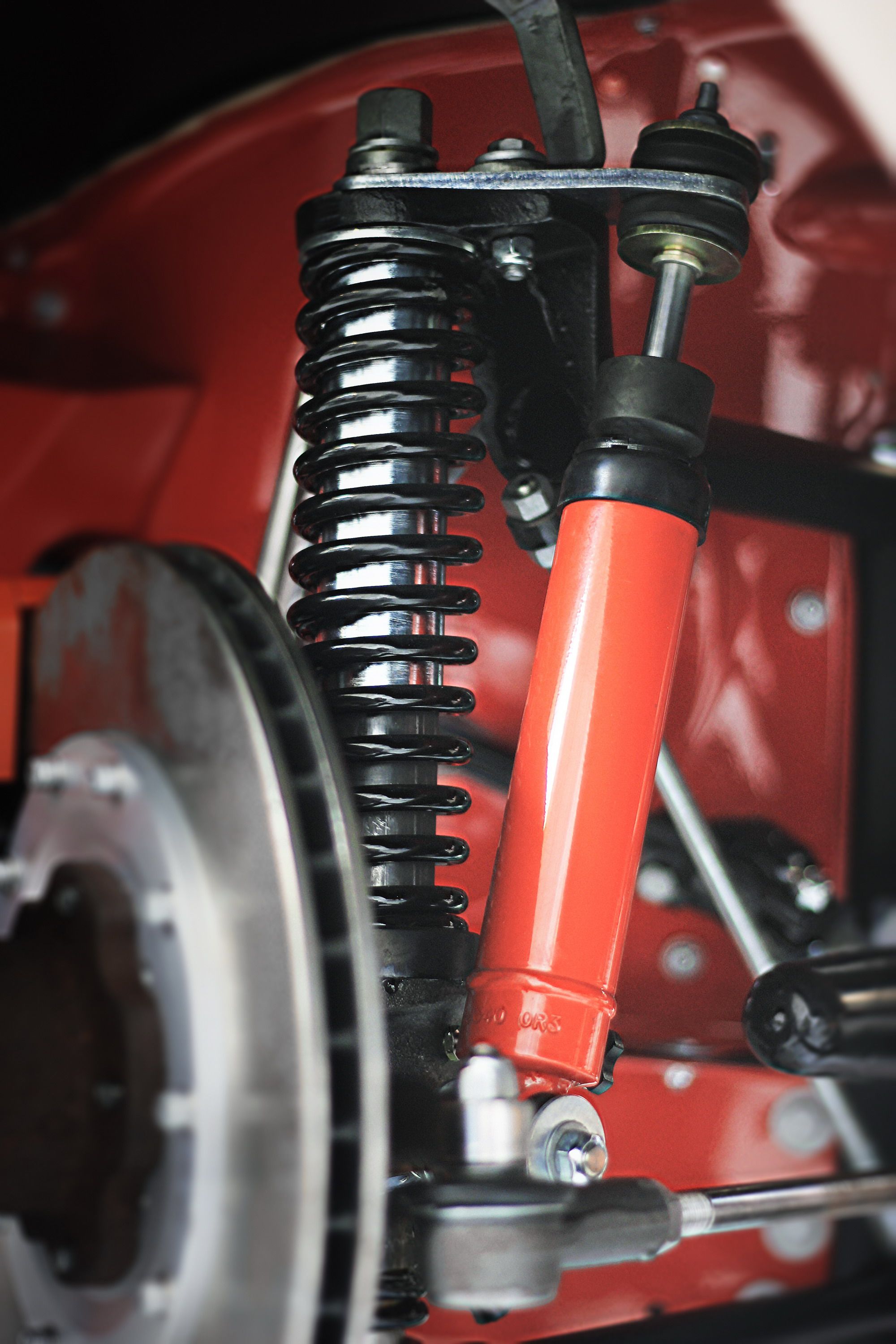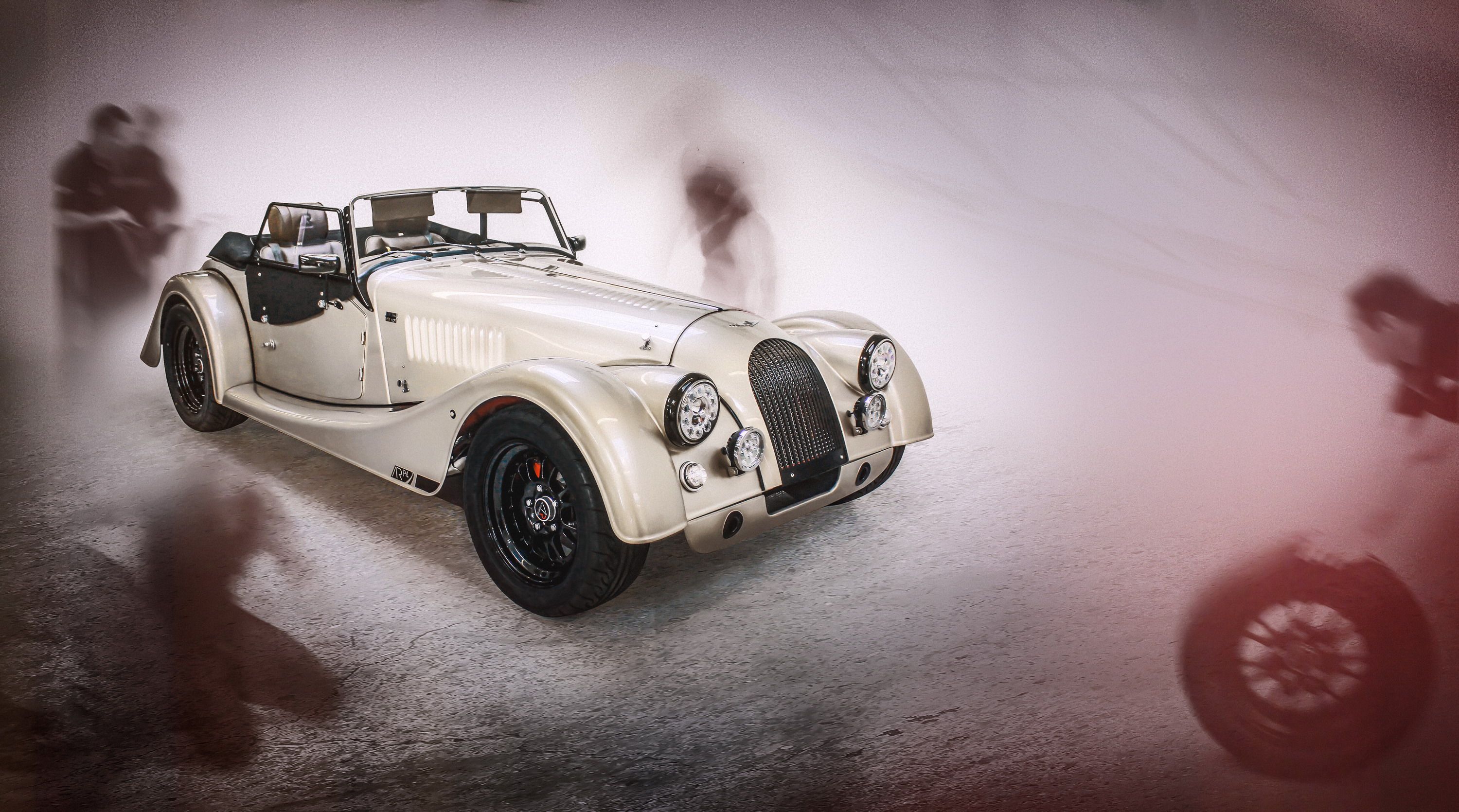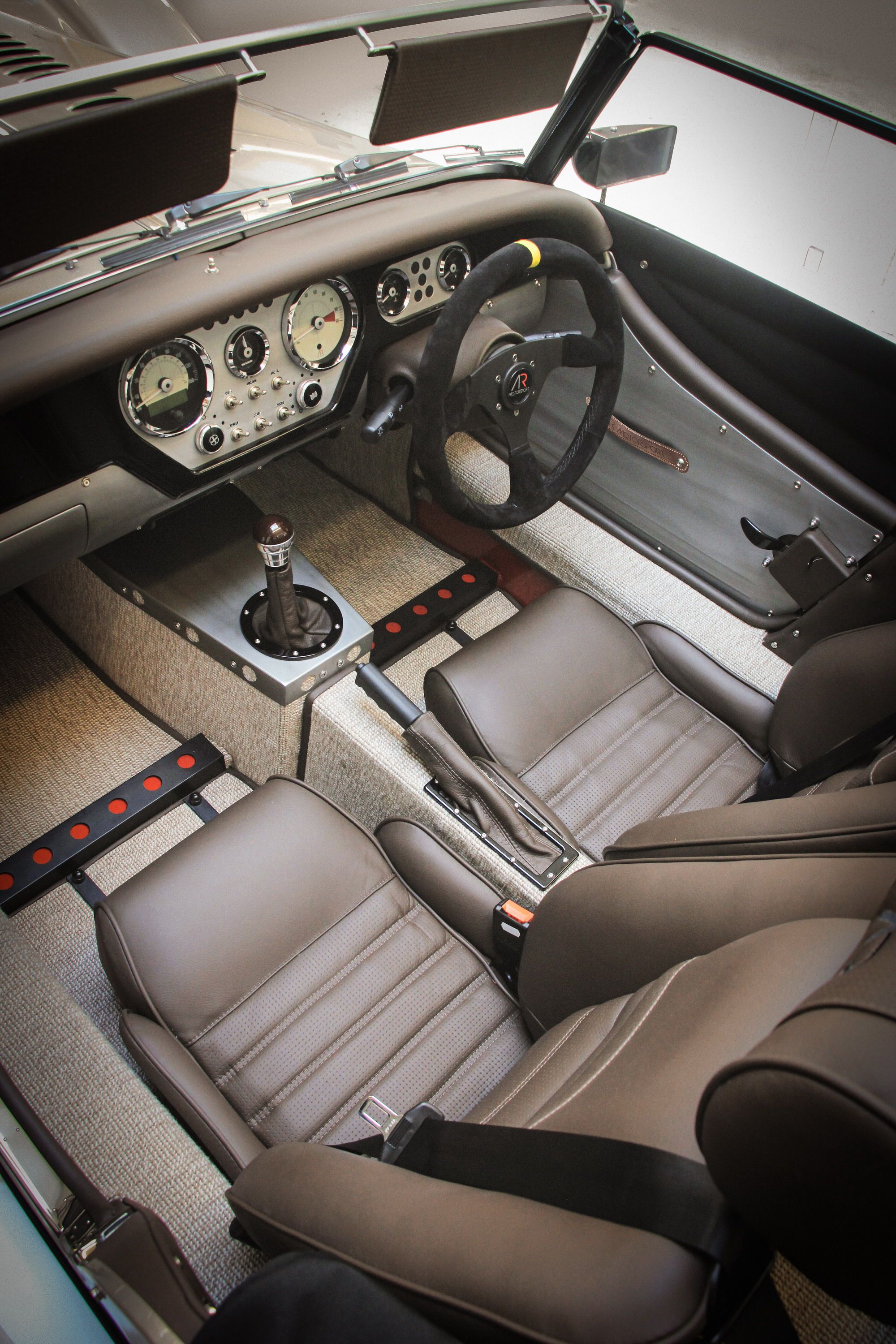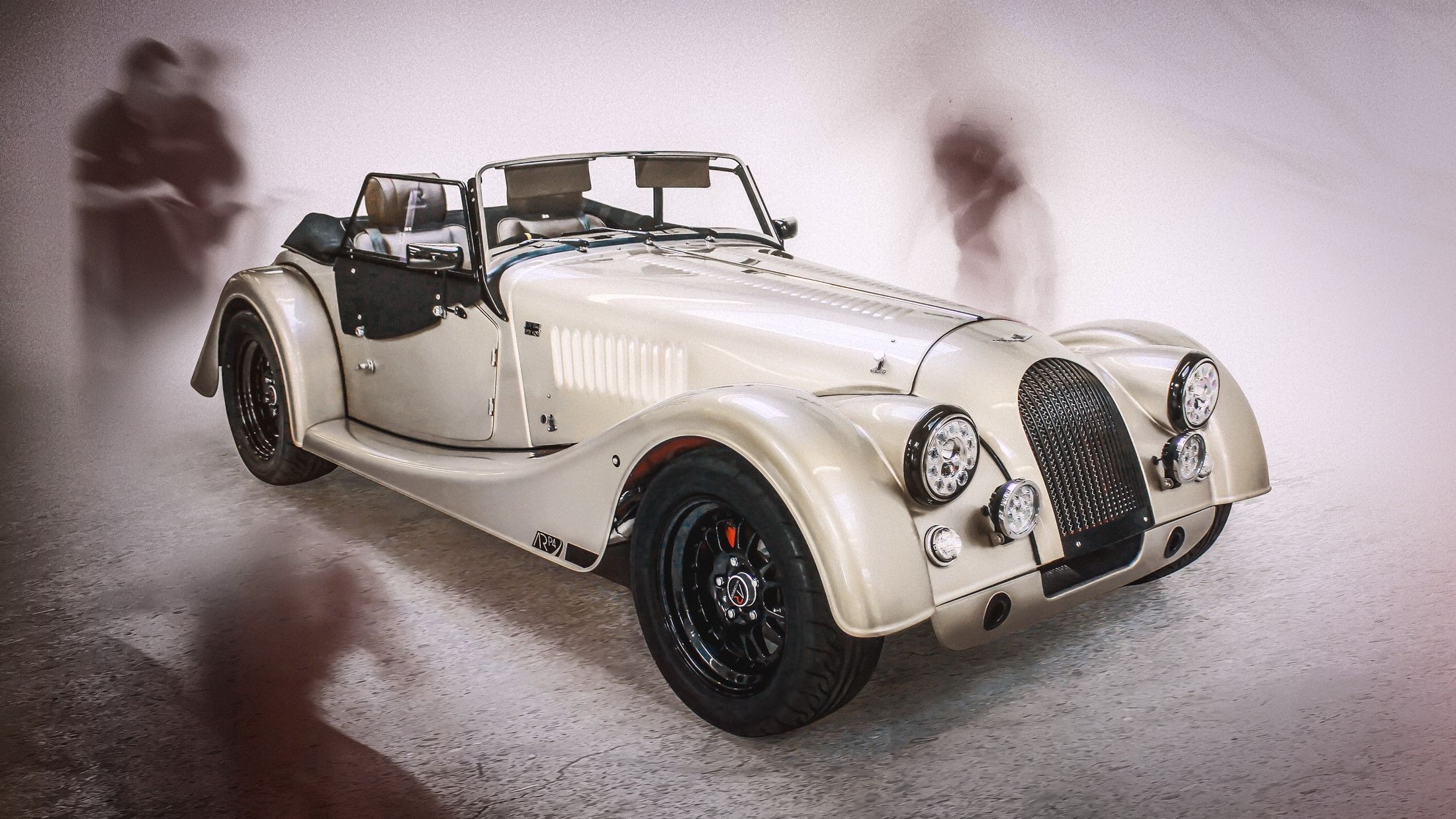They say Porsche's->ke1 been building the same car for decades. But next to Morgan,->ke60 Porsche looks like Lexus->ke47 2050. So tightly has Morgan held to tradition that not only do its new cars look like they might have been designed in 1950, they're built like it, too. As of right now, Morgan is the only car company in the world to build its frames out of wood. Yes, wood. As in, the stuff that used to be trees; in this case, ash trees harvested locally from the Malvern Hills. Now that's tradition.
Of course, you'd expect a car company so deliberately steeped in the grandiose past to plan something big for a notable commemoration. This year marks the 65th birthday of the company's most successful model, the Plus 4.->ke4226 While 65 years old is technically old enough to collect a pension in England, Morgan's limited run of 50, Cosworth->ke4911-powered AR Plus 4 proves that this dapper old chap isn't quite ready for the retirement home yet.
Continue reading to learn more about the Morgan AR Plus 4.
2016 Morgan AR Plus 4
- Make: Array
- Model: 2016 Morgan AR Plus 4
- Engine/Motor: inline-4
- Horsepower: 225
- [do not use] Vehicle Model: Array
Background
It's impossible to talk about any Morgan without a quick trip back to the past. In British terms, that usually means at least The War. Morgan first opened its doors all the way back in 1910, specializing mainly in Delta-configured three-wheelers that came with two in the front and one in the back.
Technically classified as motorcycles to get around British tax rules, these "cyclecars" quickly developed a reputation for glorious powerslides, all-around fun and slightly more practicality than the motorcycles of the time. In 1936, Morgan added another wheel to the back, a four-cylinder engine to the front, and the first 4-4 was born.
These cars went out of production during The War, and came back in 1950 as the 4/4 and a slightly longer +4 ("Plus Four.") They were nearly identical to the original cars, apart from some slightly updated bodywork and new engines. The smaller 4/4 got a 1.2-liter, 38.8 horsepower Standard Vanguard engine, and the larger Plus 4 got a 2,088 cc engine making 68 horsepower.
In 1955, Morgan introduced the Series II 4/4 and Plus 4 cars. The smaller of the two now used a Ford->ke31 Sidevalve (aka "Flathead") four-cylinder making 36 horsepower, and propelling the car to 60 mph in a hilarious 26.9 seconds. The Plus Four got an assortment of larger overhead-valve engines from Triumph, Fiat->ke30 and Rover. These cars were good for under 10 seconds to 60, which was legitimately quick for the time.
The Plus 4 has been in and out of production several times over the years, and Morgan's gone intermittently in and out of business. In its fastest iteration, the car got a Rover V-8 engine -- the "Chevy->ke199 small-block of Europe," which was actually engineered by Buick in the late 1940s, then sold to Rover in the 1960s. The +8 model (now Aero 8) was and remains Morgan's fastest model, but the lighter, cheaper and more economical Plus 4 has always been the strongest seller. Morgan reintroduced it in 2005, and since then has been using the Ford 2.0-liter Duratec engine for power.
Exterior
Obviously, a big part of the appeal for any Morgan is that it looks pretty much identical to every other Morgan that's come before. That's especially true for the Plus 4, which looks so similar to the Series II models from 1955 that it's hard to tell them apart without putting them side by side. Think that's an exaggeration? You decide.
Obviously, the new car has a few giveaway details. They didn't use 16-inch forged racing->ke447 wheels and 30-series radial tires in 1955. Those tires are also a good bit wider than the originals, necessitating wider fenders and running boards. Combined with a slightly wider track width, lower ground clearance, and somewhat more rounded wheel arches, this gives the new car a much squarer, meaner stance than ever before. Whereas the 1955 car looks like a jolly good romp on the English backroads, this new Plus 4 looks like it's meant to corner like a caffeinated badger.
Other slight detail changes include larger and somewhat more inboard-mounted driving lights, with clear lenses instead of jaundiced amber. You might also notice the complete lack of a front bumper on the new car. That's not 100 percent true to the Series II model on which this one's based, but it is true to the original bumper-less 4-4 two-seater. Yes, that is technically a cheat, and other Plus 4s have had bumpers. But come on -- it does look so much better with that square jaw exposed.
Overall, though, most would agree that this racing inspired, special-edition Plus 4 does a spectacular job of walking that fine line between true nostalgia and truly modern badass.
Interior
Morgan hasn't really gone into specifics as far as interior appointments, apart from saying the car is "fully loaded." You might think that "full equipment" for a car designed in the 1930s would include things like an oil lamp, buggy whip and cholera. But no, Morgan does offer a pretty reasonable slate of modern amenities.
Expect the AR to include a full leather interior (including dash and door handle trim), a walnut dash face (this one appears painted black), map light, clock, air conditioning, "branded" radio with CD and MP3 inputs, heated seat mats, footwell lighting and a tonneau mohair. Whatever that is. All more or less the standard stuff you'd find on any $60,000 car these days, minus a nav system.
Here's two things you won't normally find, though: Morgan provides, free of charge, a ChipEx touch up kit factory color-matched to the car's paint, and for a bit extra will give you a photo-book detailing your car's build.
Yes, Morgan will take pictures of your car at every stage of crafting and assembly, from the rolling chassis to the wood-shop (where artisans hand-craft every body support from local ash) through the body painting, engine installation and final assembly. It's a literal scrap-book of your new baby's birth, childhood and adolescence; and the last picture will be of you, taking delivery.
Man, how does anybody not love this company?
Drivetrain and Performance
Of course, all of this is quite lovely -- quaintly charming, and pleasing in an aesthetic sort of way. That's pretty much standard Morgan. But the engine in the AR Plus 4 is anything but.
First, it's a Cosworth-built Ford 2.0-liter. As anyone remotely familiar with European cars and hot-rod->ke1663 Fords knows, the British Cosworth company is a legend in racing circles; known largely for its world-beating cylinder heads, Cosworth engines have racked up scores of victories in Formula 1,->ke190 World Rally,->ke523 Le Mans->ke1591 and Touring Car racing.
While in the early days Cosworth worked almost exclusively with Lotus;->ke49 Mercedes,->ke187 Rolls-Royce->ke74 and Audi->ke14 have all contracted Cosworth for engine work. Ford's been a steady customer since the 1970s. "Cossie" Ford Escorts were some of the first hot-hatch->ke304 terrors in Europe, and the company has long since been known for its prowess with Ford-based four-cylinders. The 2016 BAC Mono uses one, as do many Formula Fords.
The Cossie Duratec used in Morgan's AR Plus 4 will be a naturally aspirated unit producing 225 horsepower, at probably somewhere around 8,000 rpm. To put that in perspective: The 2.0-liter Honda->ke34 that S2000->ke1409 fanboys rave about only made between 237 and 247 horsepower, and the no-compromise, full-race 1.8-liter Cosworth built for the 1969 racing season made 235 horsepower. No surprise then, this engine will make the AR by far the most powerful 2.0-liter Plus 4 ever produced.
Granted, yes, 225 horses may not seem like a ridiculous amount -- but bear in mind that those are naturally aspirated horses, and that the aluminum-intensive AR will ultimately come in at under 2,000 pounds. Assuming a ton even, its power-to-weight ratio should fall right in between two other retro icons: the Camaro->ke248 SS and Dodge Charger->ke218 392.
For the sake of bench-racing then, we can guesstimate this Cosworth-powered Morgan to run around 4.4 seconds to 60 mph, and 12.7 seconds through the quarter mile. Perhaps a couple tenths slower, owing to its lack of launch control and other computer cheatery. Expect it to top out around 150, owing to those Sopwith Camel aerodynamics. Wooden frame aside, the Plus 4 should produce some pretty good handling numbers; its slated to come with adjustable shocks, pre-tuned by tweed-and-leather-cap-wearing gentlemen in England.
Competition and Pricing
Morgan hasn't had competition since the The War. The last motorized vehicle to directly impact Morgan's sales was a Junkers bomber.
They're only producing 50 AR Plus 4s, and they start at about $84,000 each -- so you might want to put off buying that Viper till next year.
Conclusion
Morgan is the oldest remaining of the family owned automakers. It's watched many come and go, and hundreds of bright-eyed youths fall onto the swords of their own grand ambitions. Morgan's caught a lot of flak over the years for doing things the hard way; the expensive way, and maybe not always technically the best way. Some have called the company a novelty, desperately clinging to past glories and riding a wave of misplaced sentiment to do it. And that may not be entirely wrong.
But the fact is, here in 2015 Morgan is celebrating the birthday of a car technically old enough to collect social security. It's still carving bodies from renewable resources, still employing many of the most skilled craftsmen in Britain, and still doing things the way it used to -- but better.
Love or leave the car itself, if it's your style -- but Morgan as a company's got the kind of style we'll still be appreciating a century from now.


